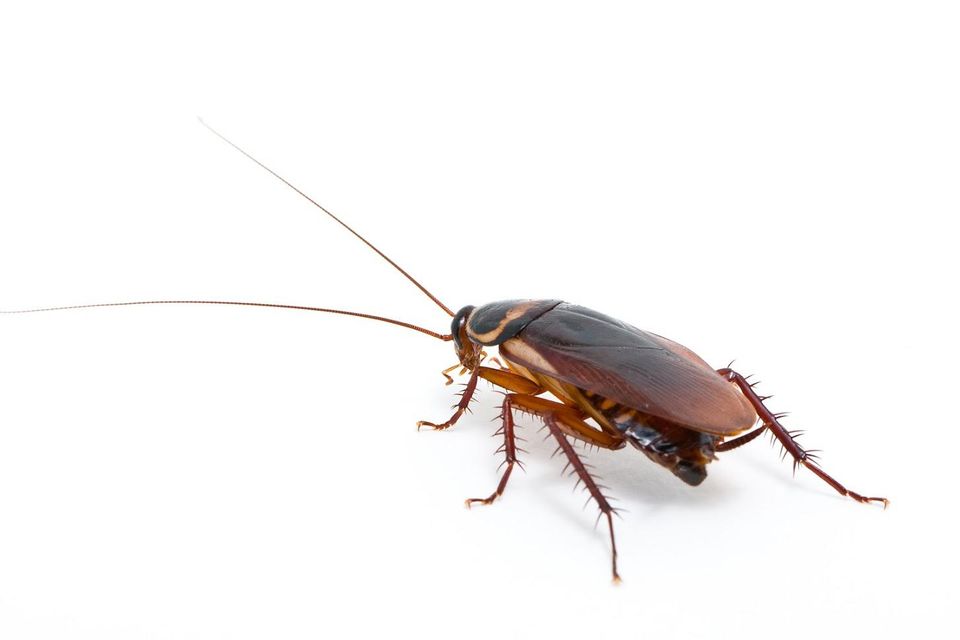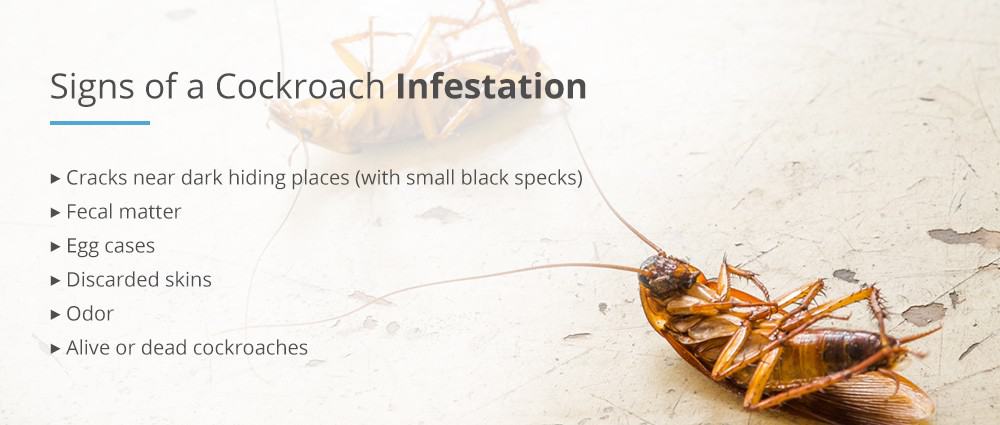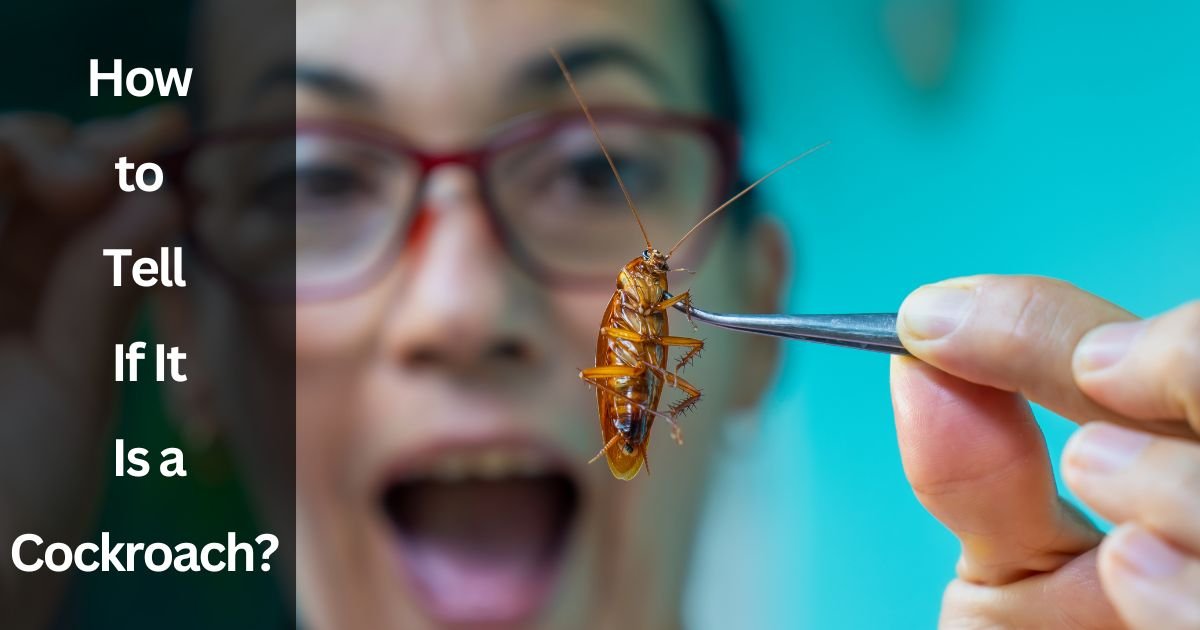To identify a cockroach, observe its flat, oval body, long antennae, and rapid, scuttling movement. Cockroaches typically have a reddish-brown to dark brown coloration and can range in size.
Recognizing a cockroach is crucial in maintaining a hygienic home or workspace. These pests are known for their resilience and ability to spread bacteria, making their prompt identification and control vital. The sight of a cockroach often invokes an immediate need for eradication due to their association with filth and disease.
Spotting these insects becomes all the more urgent given their rapid reproduction rates and nocturnal habits, which can quickly turn a single sighting into an infestation. Understanding the distinct features of cockroaches supports early detection and helps prevent the health risks and structural damage they can cause. Being informed about their presence allows for timely pest control measures, ensuring a cleaner and safer environment.
The Roach Identification Challenge
The Roach Identification Challenge often begins with a startling encounter. Spotting a potential cockroach in the home sends many of us into a flurry of activity. Determining whether the uninvited guest is indeed a cockroach is crucial. Proper identification is the first step towards effective control and elimination.
Common Mistakes In Insect Identification
Identifying insects can be tricky. The small size and quick movements of these critters add to the challenge. Here are some common insects often mistaken for cockroaches:
- Beetles: Hard-shelled and quicker flyers.
- Crickets: Known for their chirping, longer legs.
- Water bugs: Typically found near water sources, larger in size.
Each mistaken identity can lead to improper treatment methods, wasting time and resources.
Why Correctly Identifying Cockroaches Matters
Boldly distinguish cockroaches from their insect look-alikes. Correct identification:
- Enables targeted and effective treatment plans.
- Prevents unnecessary use of pesticides.
- Helps monitor and prevent future infestations.
Identifying cockroaches accurately saves time, money, and maintains a healthy home environment.
Cockroach Species Primer
Welcome to our Cockroach Species Primer, where identifying these critters is made easy. You may not be an entomologist, but with a little knowledge, you’ll distinguish between the most common roach species like a pro!
American Cockroach Vs. German Cockroach
The American and German cockroaches are two of the most prevalent pests in homes. The American roach, Periplaneta americana, is quite large, typically over 1 inch long, with a reddish-brown hue and a yellow figure-eight pattern on its head. They love warm, damp environments and often invade basements and sewers.
In contrast, the German cockroach, Blattella germanica, is smaller, seldom exceeding 0.6 inches, and is light brown with two dark stripes running down its back. It prefers warm, humid places like kitchens and bathrooms. To tell them apart, look for size and markings – it’s that simple!
Other Species You Might Encounter
- Oriental Cockroach: Dark brown, almost black, and love cool, damp areas.
- Brown-banded Cockroach: Brown with bands across wings, avoid moisture.
- Smokybrown Cockroach: Uniform dark brown and often found in attics.
- Mediterranean Cockroach: Light tan, active flyers, attracted to lights.
These species vary in habitat and behavior.
Differentiating cockroach species is vital for effective pest control. Understanding their habits and preferences helps tailor the best attack plan. Pest identification is the first step in taking back your home. Gripping a flashlight, you have the power to unveil the invader’s identity.
Size And Shape Keys
Identifying a cockroach involves examining its size and shape. These pests have distinctive dimensions and body characteristics. Understanding these can help determine the presence of cockroaches in your environment.
Typical Cockroach Dimensions
The size of a cockroach is a telltale sign. Most species measure between 0.7 inches to 3 inches in length. Small cockroaches may initially seem harmless yet they can quickly multiply. Larger varieties like the American cockroach suggest a well-established presence. Size alone is not enough to confirm identification. It’s vital to also note shape details specific to these creatures.
Distinctive Body Characteristics
Oval-shaped and flattened bodies are unique to cockroaches. This shape allows them to slip through tiny cracks with ease. They also possess six spiny legs that enable rapid movement. A pair of long, thin antennae often match or exceed the length of their bodies. Majority have two sets of wings, with the forewings being more rigid to protect the hind wings underneath.
Identifying Marks
Look for specific marks on their bodies. For example, the German cockroach has two dark stripes running lengthwise on its pronotum. Cockroaches generally display a brown or reddish-brown coloration, but this can vary.
| Type of Cockroach | Size (inches) | Color |
|---|---|---|
| German Cockroach | 0.5 – 0.7 | Tan to light brown |
| American Cockroach | 1.4 – 1.6 | Reddish-brown |
| Oriental Cockroach | 1.0 – 1.25 | Dark brown to black |
- Wings: Not all cockroaches use their wings for flight. Some merely glide.
- Antennae: Sensitive to touch and odors, vital for their survival.
- Legs: Equipped with spines for defense and navigation through tight spaces.
Color And Markings Guide
Identifying a cockroach can seem tricky. Yet, their color and markings offer clues. This guide dives into these distinct features. Catch sight of a roach? Use this information to confirm its identity.
Common Color Patterns
Cockroaches often blend into their environments. Their color patterns are survival tools. Most roaches share common hues:
- Brown: Ranging from light to dark, it is typical.
- Black: Usually found in the smaller species.
- Red: Some have reddish-brown tones, especially when young.
- Yellow: A few species sport yellow accents.
Unique Markings To Look For
Certain roaches possess distinguishing marks. Unique spots or stripes help in identification. Look for these key markers:
| Species | Marking | Location |
|---|---|---|
| American Cockroach | Figure 8 pattern on the head shield | Behind the head |
| German Cockroach | Two dark stripes running lengthwise | The pronotum |
| Asian Cockroach | Similar to German but with longer wings | Back of the body |
| Oriental Cockroach | Dark and shiny with no distinctive markings | Entire body |
| Madarin Cockroach | Lighter edges with a dark center | Wings and body |
Behavioral Clues
If you suspect that your home might be hosting some unwanted guests, it’s important to understand the behavioral clues that can help you identify cockroaches. These pests have distinct habits and patterns that allow them to thrive in environments close to humans.
Movement Patterns And Speed
Observing how a potential pest moves can be a telltale sign. Cockroaches are known for their speed and ability to maneuver away from light or disturbances. These critters can run up to three miles in an hour, making them one of the fastest insects!
- Sudden darting motions when exposed to light
- Rapid movement along walls or floors
- Ability to climb vertically and upside-down
Cockroach Habitats And Hiding Spots
Cockroaches are not only fast but also masters of hide and seek. They prefer warm, moist, and dark environments to call home. During the day, they remain hidden and come out at night to feed.
| Location | Description |
|---|---|
| Kitchen Cabinets | Dark, often containing food particles |
| Behind Appliances | Warm from motor heat, hidden from view |
| Bathroom Cabinets | Moist from humidity, less foot traffic |
Knowing these patterns can help you detect and control a cockroach problem before it becomes an infestation. Always examine these common areas if you suspect cockroaches have invaded your space.

Credit: www.wikihow.com
Physical Signs Of Infestation
Physical Signs of Infestation act as definitive clues to unearth the presence of unwanted guests in your home, specifically cockroaches. Identifying these silent invaders requires a keen eye for certain telltale marks. Understanding these clues helps efficiently tackle the pest problem before it escalates.
Droppings And Egg Casings
Cockroach droppings are a clear indicator of their lurking presence. These droppings often resemble black pepper or coffee grounds and are found in areas most visited by these pests. Kitchens, pantries, and baseboards commonly showcase this evidence of infestation. Cockroach droppings may differ in size depending on the species, but all imply an urgent need for pest control measures.
Another undeniable sign is the discovery of egg casings, known as oothecae. These casings contain multiple eggs and are usually brownish in color. Once empty, they are often found discarded in hidden locations such as in the crevices of furniture, behind appliances, or within bookshelves.
Damage And Smear Marks
Cockroaches are not only scavengers but can also cause noticeable damage to belongings. Items such as books, wallpapers, and food packaging often display signs of cockroach activity. Uneven edges, gouges, or the presence of holes serve as a red flag that cockroaches have been gnawing on these materials.
The pests also leave smear marks as they move around. These marks can appear as irregular, dark, or rusty-colored streaks on horizontal surfaces and at wall-floor junctions. Such smudges result from the cockroaches frequenting the same paths, leaving behind a trail of waste and bodily fluids.
Cockroach Prevention Tips
Welcome to our section on Cockroach Prevention Tips. Nobody wants these pests scurrying around their home. Understanding how to prevent cockroaches is a key step in keeping your space bug-free. Let’s explore some effective strategies to keep these unwelcome guests out of your living area.
Maintaining A Clean Environment
A clean home repels cockroaches. These pests love crumbs and spills. To keep them away, follow these simple steps:
- Wipe counters daily.
- Vacuum regularly, especially in kitchen areas.
- Keep food in sealed containers.
- Dispose of garbage promptly and properly.
- Don’t leave pet food out overnight.
By maintaining cleanliness, you cut off their food supply, making your home less inviting.
Sealing Entry Points
Cockroaches sneak in through tiny gaps. Keep them out with these tips:
| Area to Seal | How to Seal |
|---|---|
| Windows & Doors | Use weather stripping and caulk. |
| Pipes & Faucets | Seal gaps with expanding foam or caulk. |
| Cracks in Walls | Fill with cement or plaster. |
| Venting Openings | Install mesh screens. |
Inspect and seal your home regularly to eliminate entry points.
Implement these straightforward strategies for a roach-free environment. Remember, persistence is key in preventing infestations.

Credit: www.qualitypestoh.com
Professional Pest Control
Spotting a cockroach at home often triggers immediate concern. These resilient pests pose a threat to hygiene and can rapidly infest areas. Sometimes, a DIY approach falls short in handling the problem. This is where professional pest control comes into play. Professionals offer expertise, thorough treatments, and peace of mind in dealing with these hardy invaders.
When To Call The Experts
Identifying a cockroach infestation early is crucial. Look for signs such as droppings, egg cases, or a musty smell. If you notice these or multiple live roaches, it’s time to seek professional help. Experienced pest controllers assess the situation precisely and offer targeted solutions.
- Multiple sightings of roaches, especially during the day
- Discovery of cockroach nests or egg cases
- Persistent musty odors in certain areas
- Allergy symptoms or asthma attacks without clear triggers
- Regular DIY methods fail to control the problem
Benefits Of Professional Treatment
Professional cockroach control extends beyond mere extermination. It includes identification, prevention, and education on how to avoid future infestations. Below are key benefits of opting for professional services:
| Benefit | Description |
|---|---|
| Expert Knowledge | Specialists with insights on cockroach behavior and treatment methods |
| Advanced Tools | Access to commercial-grade insecticides and equipment |
| Long-term Solutions | Strategies to prevent recurrence, safeguarding your space in the future |
| Safety Measures | Use of methods that are safe for your family and pets |
| Time Saving | Quick resolution without the hassle of repeated DIY efforts |
Diy Detection Practices
Spotting a cockroach can be an unsettling experience. With DIY Detection Practices, anyone can confirm a cockroach infestation. This guide explains simple steps for identifying these pesky critters.
Setting Up Traps
One effective method to detect cockroaches is by using traps. These traps lure roaches in and prevent them from escaping.
- Get adhesive traps from a local store or online.
- Place the traps in areas where you suspect cockroach activity, such as dark corners or under sinks.
- Check the traps daily. A caught cockroach is a sure sign of infestation.
Using Natural Repellents
Natural repellents can help discourage cockroaches while indicating their presence.
- Baking soda and sugar: A mixture of these can kill roaches attracted to the sugar.
- Essential oils: Peppermint, cypress, and tea tree oils repel roaches when sprayed around suspected areas.
Regularly inspect these areas for dead roaches, which confirm their former presence.

Credit: pestech.com
Health Risks And Safety Concerns
Identifying a cockroach infestation is crucial due to the related health risks and safety concerns. Cockroaches carry pathogens that cause diseases. Their presence can lead to allergic reactions and asthma in sensitive individuals. Understanding the dangers and knowing how to stay safe is vital.
Understanding The Health Implications
Risks associated with cockroaches impact households globally. These pests spread germs that can cause illness. Cockroaches often contaminate food sources and surfaces as they search for food. Here are key health implications:
- Allergies: Cockroach droppings and dead skin can trigger allergic symptoms.
- Asthma: Sensitive people may suffer asthma attacks from cockroach allergens.
- Diseases: They carry bacteria like E. coli and Salmonella on their bodies.
Protective Measures In Infested Areas
To reduce health risks in cockroach-infested areas, implement protection strategies:
- Seal cracks: Block entry points around doors, windows, and pipes.
- Food storage: Keep food in sealed containers to deter cockroaches.
- Cleanliness: Regularly clean floors, counters, and hidden spaces.
Use caution with pesticides to avoid adverse effects. Natural alternatives like diatomaceous earth can also be effective. Professional pest control is a safe option for severe infestations.
Frequently Asked Questions
How Do You Know If It’s A Roach Or Not?
To identify a roach, check for a flat, oval body, long antennae, and a reddish-brown color. Roaches usually have a rapid, scurrying movement.
What Bug Can Be Mistaken For A Roach?
Beetles and water bugs are often mistaken for cockroaches due to similar shapes and sizes. Certain characteristics like color and behavior help differentiate them.
Should I Worry If I See One Cockroach?
Seeing one cockroach often indicates more hidden nearby. It’s advisable to inspect for more and consider pest control measures to prevent an infestation.
What Are Some Signs That Cockroaches Are Present?
Signs of cockroach presence include droppings resembling coffee grounds, a musty odor, shed skins, egg cases, and live or dead cockroaches. Spotting these indicators often means infestation.
Conclusion
Determining whether you’re dealing with a cockroach can be straightforward if you pay attention to the signs mentioned in our guide. Spotting these common invaders quickly leads to effective control. Remember, prompt identification prevents infestations and ensures a cleaner, safer home environment.
Keep these tips handy for a pest-free space.
Related posts:

I’m MD Tanvir, and I bring years of expertise gained from working closely with pest control companies to the forefront. My journey in the industry has inspired me to launch Bug Battler, a platform aimed at equipping people with the know-how to combat pests autonomously. Through Bug Battler, I aim to empower individuals with practical insights to tackle pest infestations effectively.

